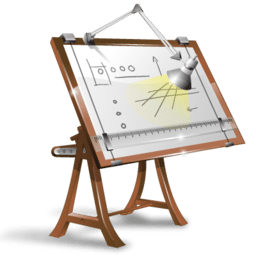There are a lot of people on the internet making their own syringe pumps. Making your own syringe pump will be an interesting and rewarding project. If your here because your thinking about it – you have my full encouragement. DIY pumps are in their early stages and they offer new and exciting possibilities.
There’s a number of folks who argue that commercial pumps cost too much – but I don’t agree with them.
Here’s a few links to open source syringe pump projects:
- This fascinating 3D bio printer which uses a diy syringe pump.
- Another acrylic plate design diy syringe pump – looks like work stopped on this some time ago. The lead screw was causing issues.
- OpenSyringePump – there’s plans and parts listed at Hackaday.io and at Naroom’s GitHub.
- Dr D-Flo has released plans for a pump with a metal rail chassis, powered by an Adafruit computer board – very interesting. Approximate parts cost – just under $200.
- Gerrit Niezen has OpenPump a nice clean looking design, but the project seems stalled.
- There’s Open Source Pump Library
What Problems Do You Have To Solve?
 Here’s a short list of electronic and mechanical issues you will need to engineer solutions too.
Here’s a short list of electronic and mechanical issues you will need to engineer solutions too.
- Driving the syringe plunger – ok that’s obvious – but you need to apply smooth constant pressure to create your flow rates. Easy if you only need a narrow range of flow rates. Most designs use a stepper motor, although I have seen a couple of designs based around a servo from radio control models. Drive electronics – obviously a stepper motor controller or a servo controller.
- The ability to crunch some numbers to work out rates, pressures, forces – that sort of thing. In the example links above, designs direct drive the stepper motor to the lead screw. No reduction drive system is used. Many commercial pumps use a reduction drive with a belt system to help reduce the pulsations from the stepper motor and increase the resolution. Even servos have stepped output.
- Holding the syringe. That sounds easy – but the syringe has to be pushed and possibly pulled (infuse and withdraw) and it has to be removable. Syringes need to be filled, and replaced – they wear out.
- A case to contain most if not all of the mechanics and electronics to protect it from fluid leaks – imagine a split or leaky syringe under constant pressure! The containment also provides protection from dirt and filth which can ruin electronics and bind your smooth moving mechanics.
- Control with calibration and sequencing. You will get to a point where you want to set a rate. Then perhaps set another rate. Perhaps you will then want to only dispense a certain volume and stop. More sophisticated applications might require a number of rates and volumes to be cycled through.
Clearly the first design consideration is your applications fluid pumping needs. This will determine the features you need in your DIY syringe pump
 Can SyringePumpPro control your DIY syringe pump?
Can SyringePumpPro control your DIY syringe pump?
SyringePumpPro controls pumps by sending ASCII commands over an RS232 connection to the controller inside. For example, to get the pump to infuse 750mls per hour the command sent to the pump would be
RAT 750mh
The pump receives this command and then performs the electronic and thus the mechanical operations to effect that pumping rate.
You will need a micro-controller based design. Then using my software with your syringe pump will be fairly straight forward. When you create the software for your pump’s microprocessor, simply write your code to implement the some or as much as you need of the command set for a New Era System’s Syringe Pump over the RS232 connection, or create your own command set and send them to me. We can talk about implementation at that point.
You will need to give your pump a unique version message in response to a VER command. Then will need to let me know what your pump response will be to the VER command so that I may update SyringePumpPro so that it recognizes your new make and model of Syringe Pump . You will also need to provide me with some technical specifications such as the range of syringes, and the pressures your mechanism generates.
Have you built a DIY Syringe Pump?
If you have – whether it be micro-controller (ASCII/rs232) controlled or not – please send me a link to your design.
Back to Pumps | Back to FAQs

